Activities for babies with torticollis
Information for parents from the Paediatric Orthopaedic Service
Your baby has been diagnosed with torticollis.
Torticollis is a condition where the muscles in your baby's neck have developed a problem. They cannot move their neck properly, and always seem to have a stiff neck. At your appointment today, your physiotherapist has suggested some exercises that may help.
If you have any concerns or questions about the following exercises, please speak to your physiotherapist.
Please only practice those exercises highlighted by your physiotherapist. Some of these exercises may not be appropriate for your baby.
Your physiotherapist will go through each of these exercises in the clinic, showing you how they are done. If you have any questions, please speak to your physiotherapist.
Please practice the exercises every day, unless told otherwise by your physiotherapist.
Do each exercise as often as possible for about 5 to 10 minutes, 3 to 5 times a day.
Encourage lots of supervised ‘tummy-time’.
Do each exercise slowly and gently.
These exercises should not hurt your baby. If they appear distressed, stop and try again later that day.
Remember each child is different. They will develop and improve in their own time.
If your baby is wearing a plaster cast, it is important that they take their weight on the cast for the exercise to work.
If you have any questions about these exercises, please email the Physiotherapy Department.
Exercises for babies with torticollis
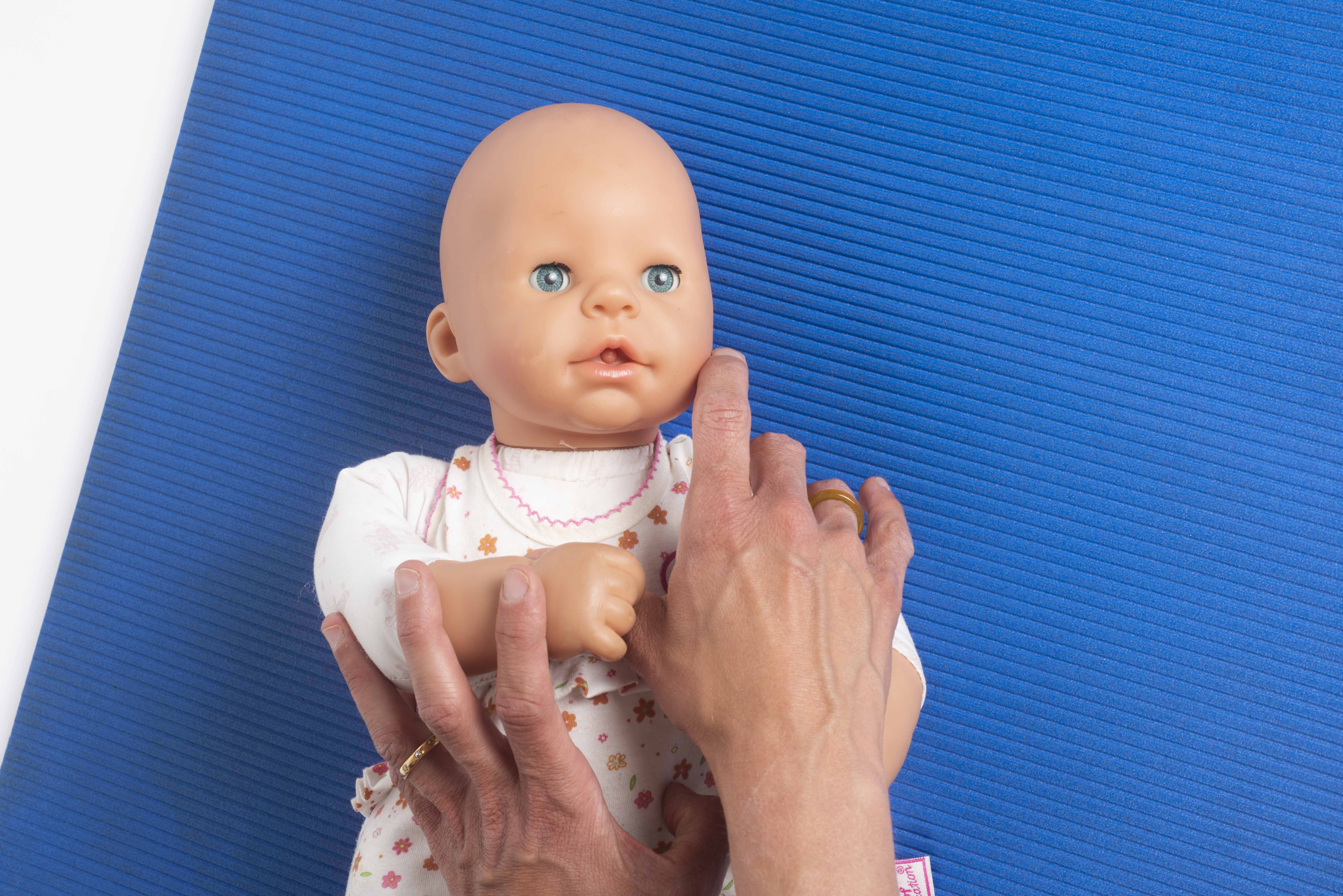
Encourage your baby to turn their head from side to side
Use toys to encourage your baby to look to the opposite side. For example, if your baby tends to look to the right all the time, place all their toys on their left-hand side.
With a younger baby, you can use the ‘rooting reflex’. This is where baby turns to the side if you stroke the corner of their mouth.
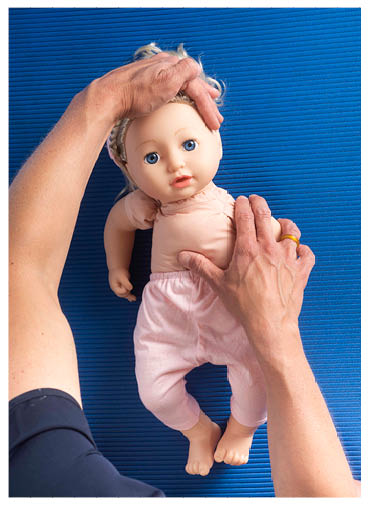
Adding a little stretch (side flexion)
Lay your baby on their back.
Encourage them to tilt their head to the side, to gently stretch tight muscles.
Make sure to hold your baby’s shoulder when doing this.
Release their head if they start to resist you.

Adding a little stretch (rotation)
Lay your baby on their back.
Encourage them to look to the opposite side. Gently use your hand to give them a little more movement.
Make sure to gently hold down your baby’s shoulder. For example, if their head is facing left, hold down their right shoulder.
Release their head if they start to resist you.
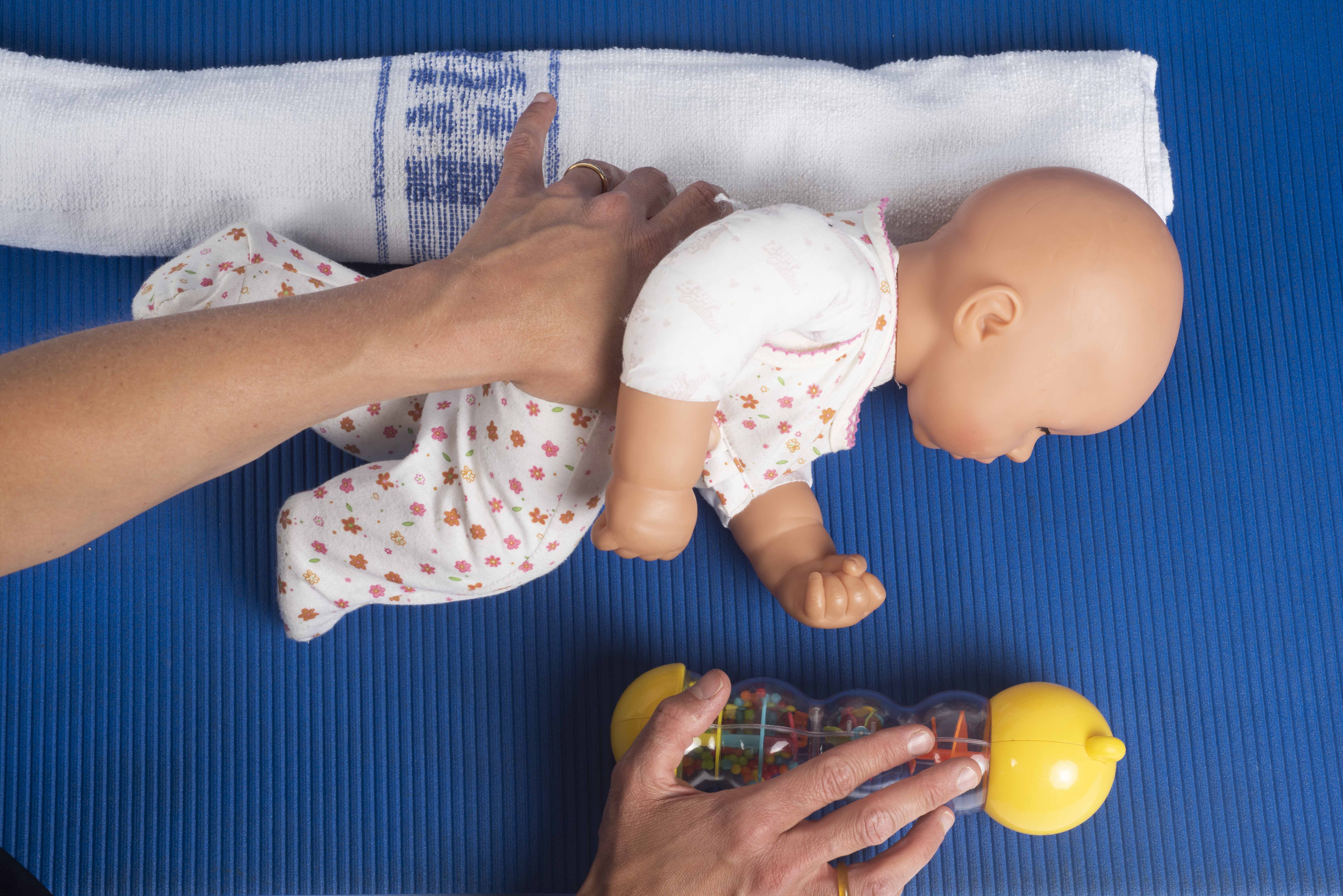
Lying on their side
Lay your baby on their right side, so that they can see their toys. This also helps your baby to bring both their hands to the centre of their body.
Place a blanket / towel behind their back, so they feel secure.
You can also place a towel between their knees.
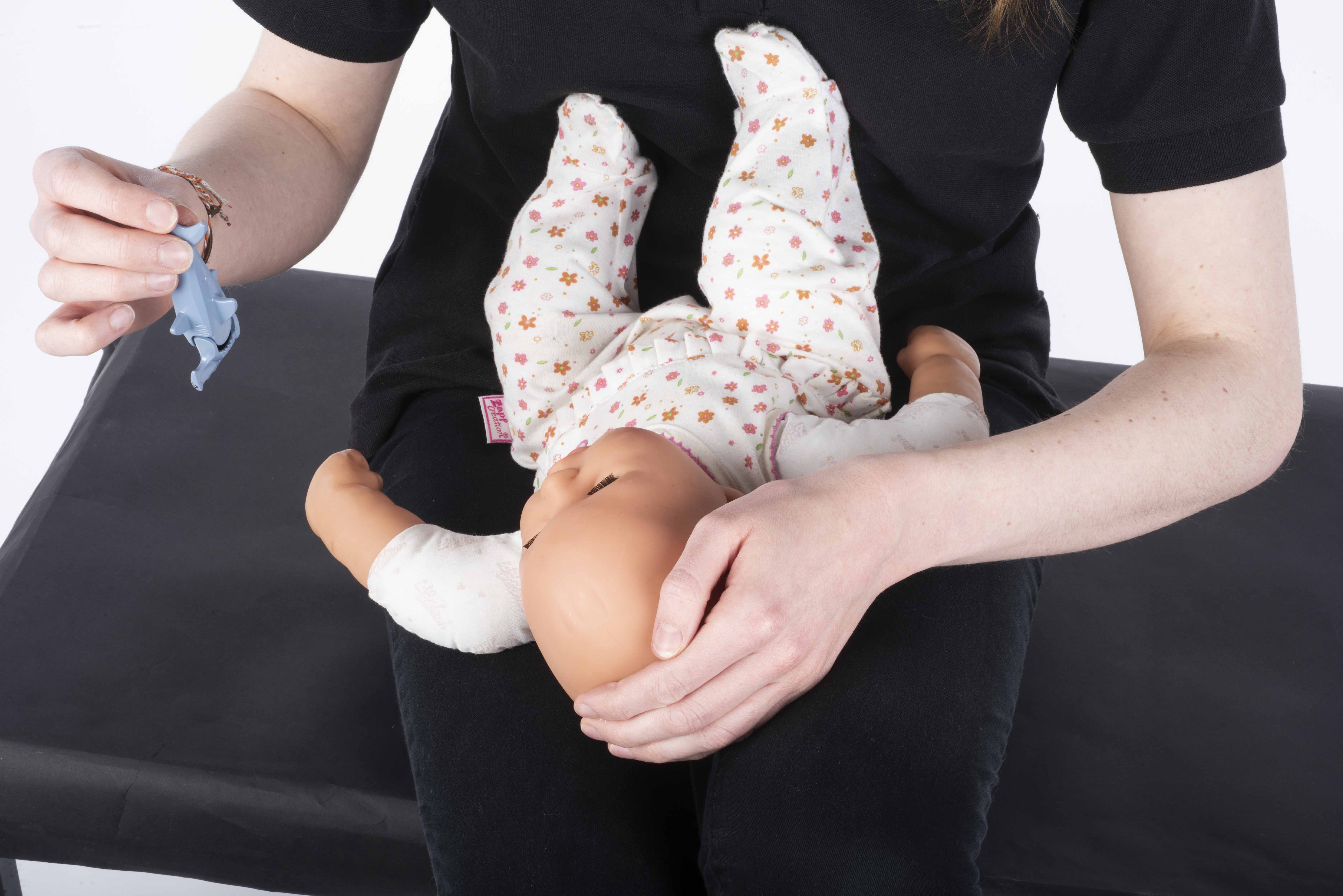
Lying on your lap
Place your baby on your lap.
Raise your left leg to encourage them to look to their right.
Repeat with your right leg.
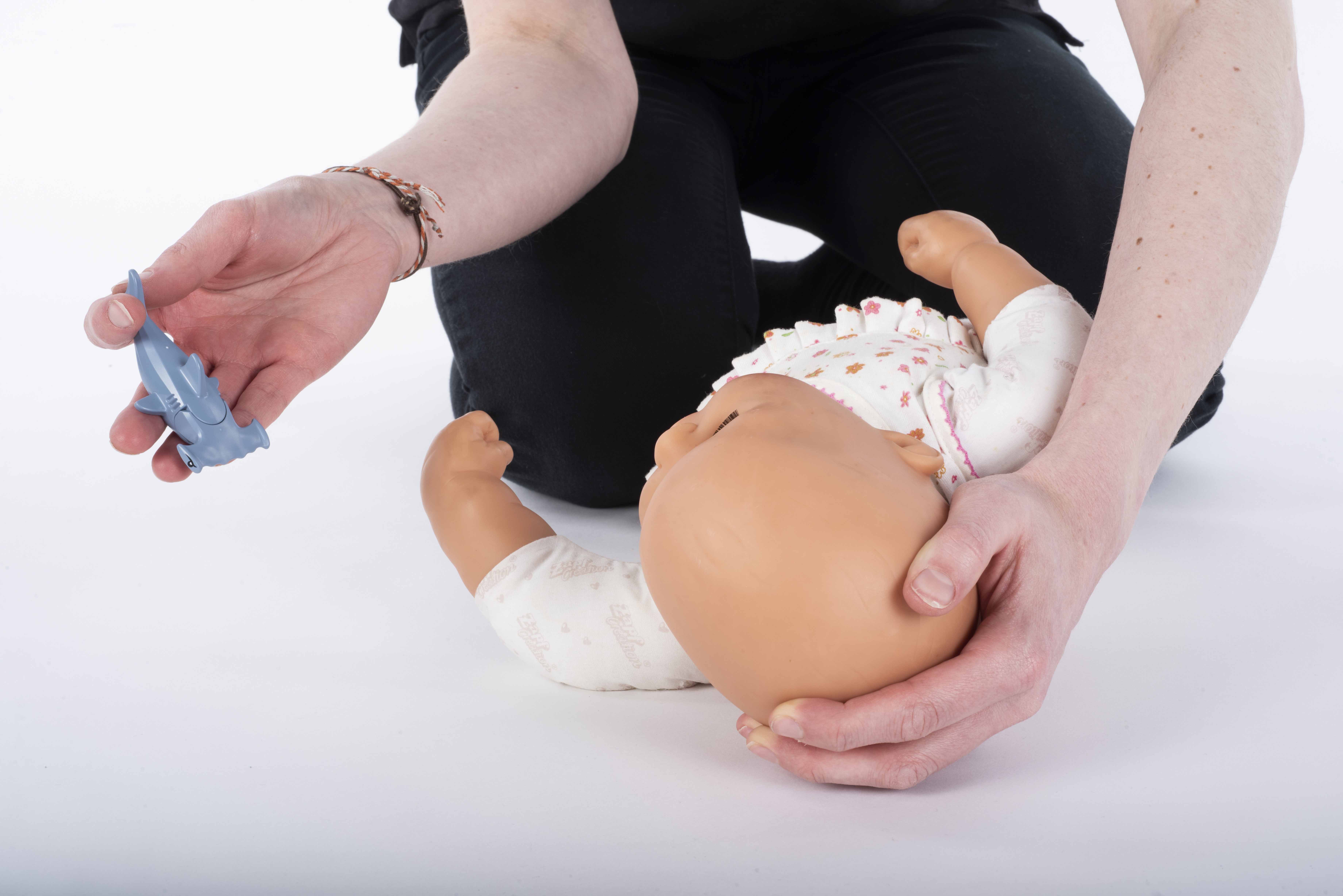
Adding a little stretch
Lay your baby on their back, and encourage them to look left. Gently use your hand to give a little more movement.
Make sure to gently hold down your baby’s right shoulder.
Release their head if they start to resist you.
Cheek down first
Lay your baby down on their side (1).
Roll them on to their back, but try to keep their cheek touching the mat (2).
Release their head if they start to resist you.
-
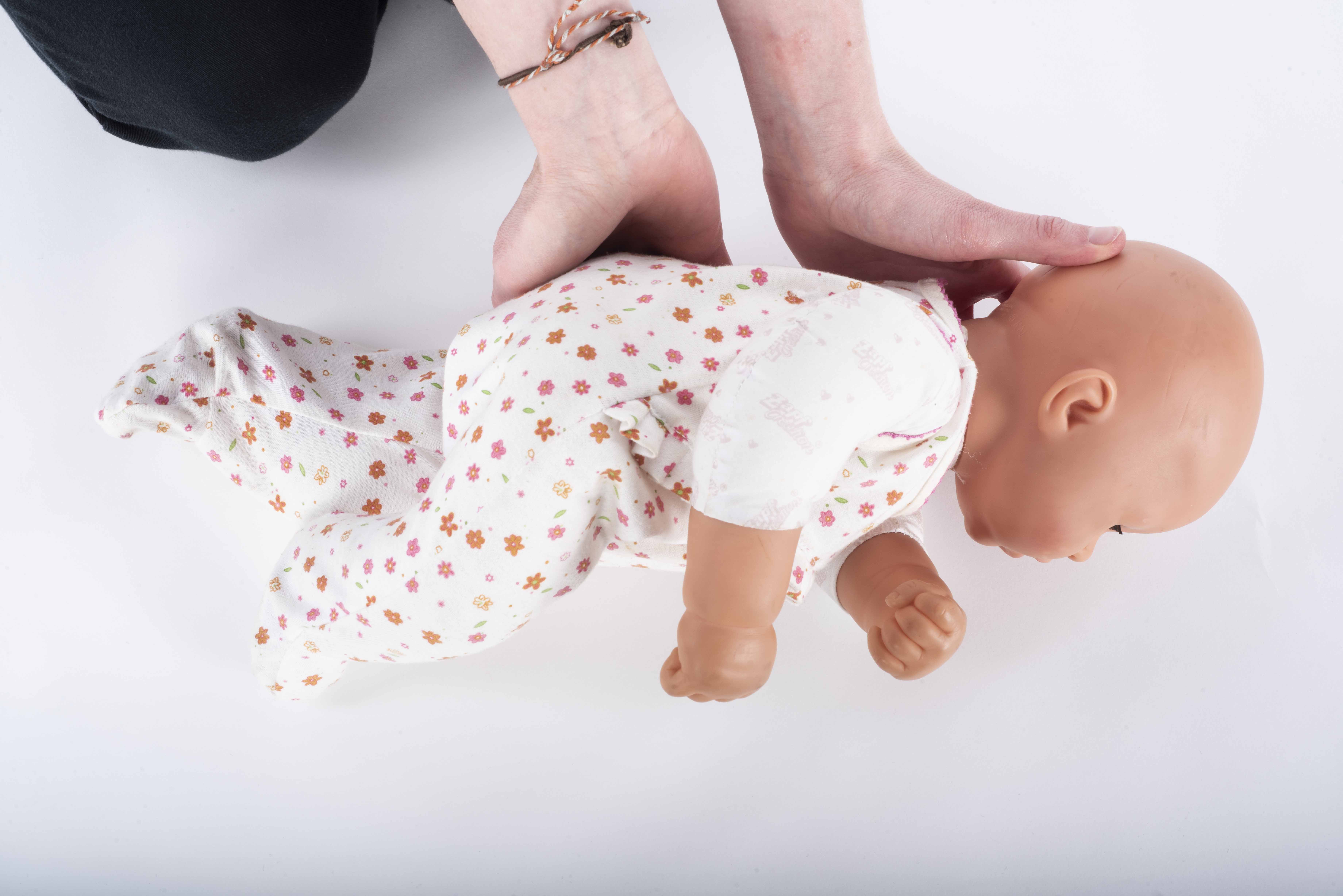 Cheek down first (1)
Cheek down first (1) -
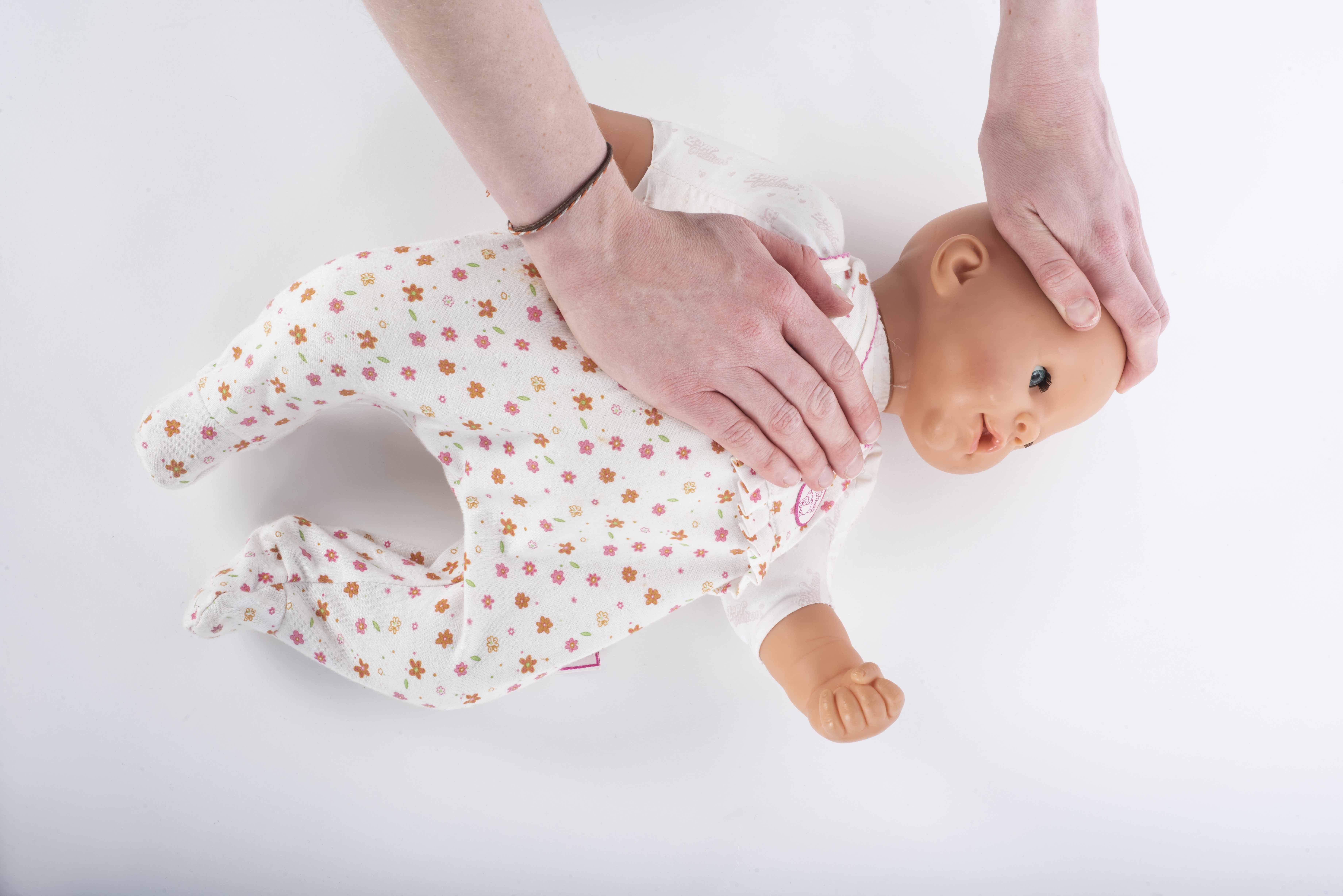 Cheek down first (2)
Cheek down first (2)
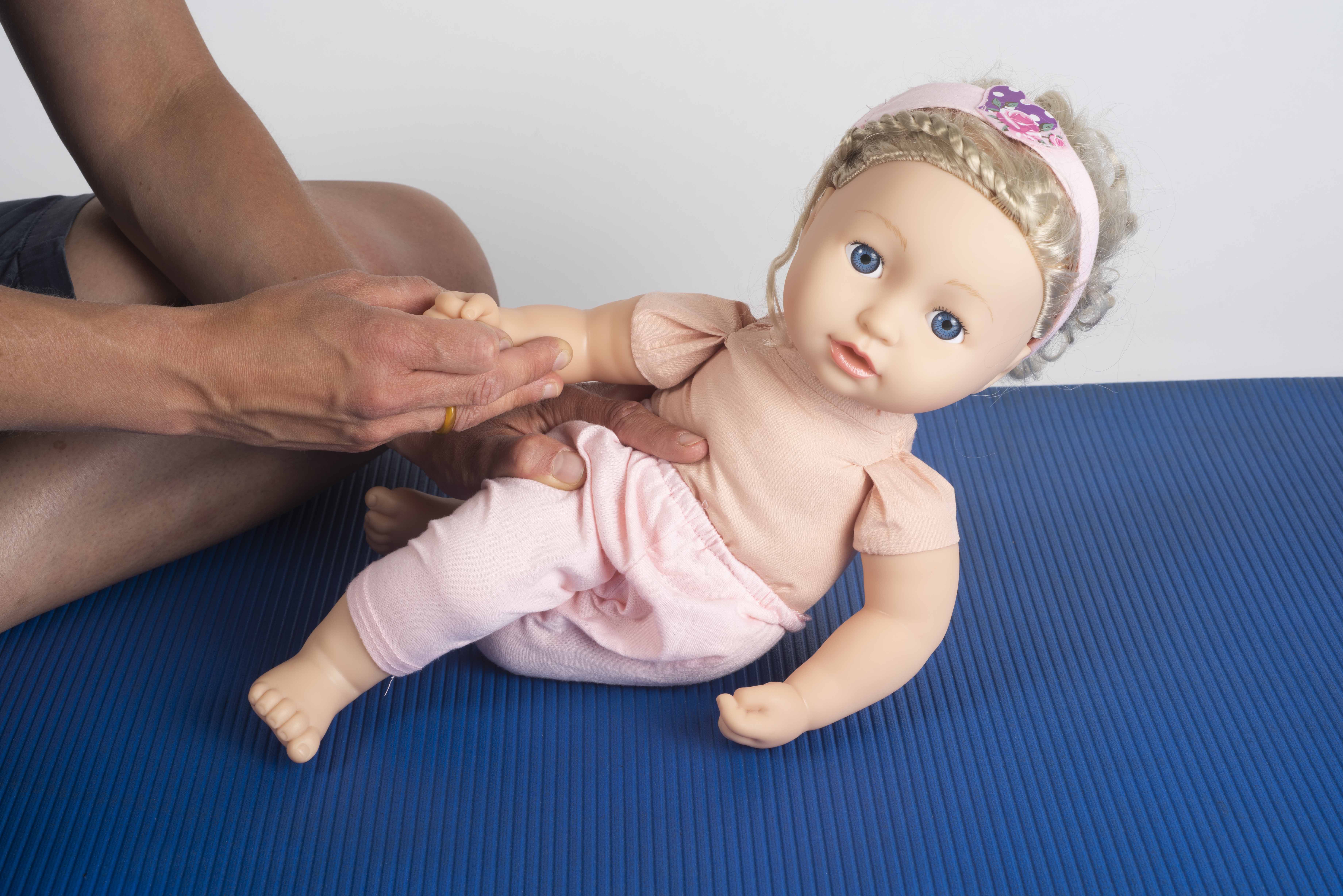
From lying into sitting
When picking up your baby, first roll them onto their side.
Get them to lift their head up and push with their arm.
This strengthens their neck muscle on the opposite side to the affected muscle.
Using a mirror
Stand or sit down facing a mirror, holding your baby as shown (1).
Tilt your baby slowly to the left, so that they have to bend their head to the right, to try and get their eyes level (2).
-
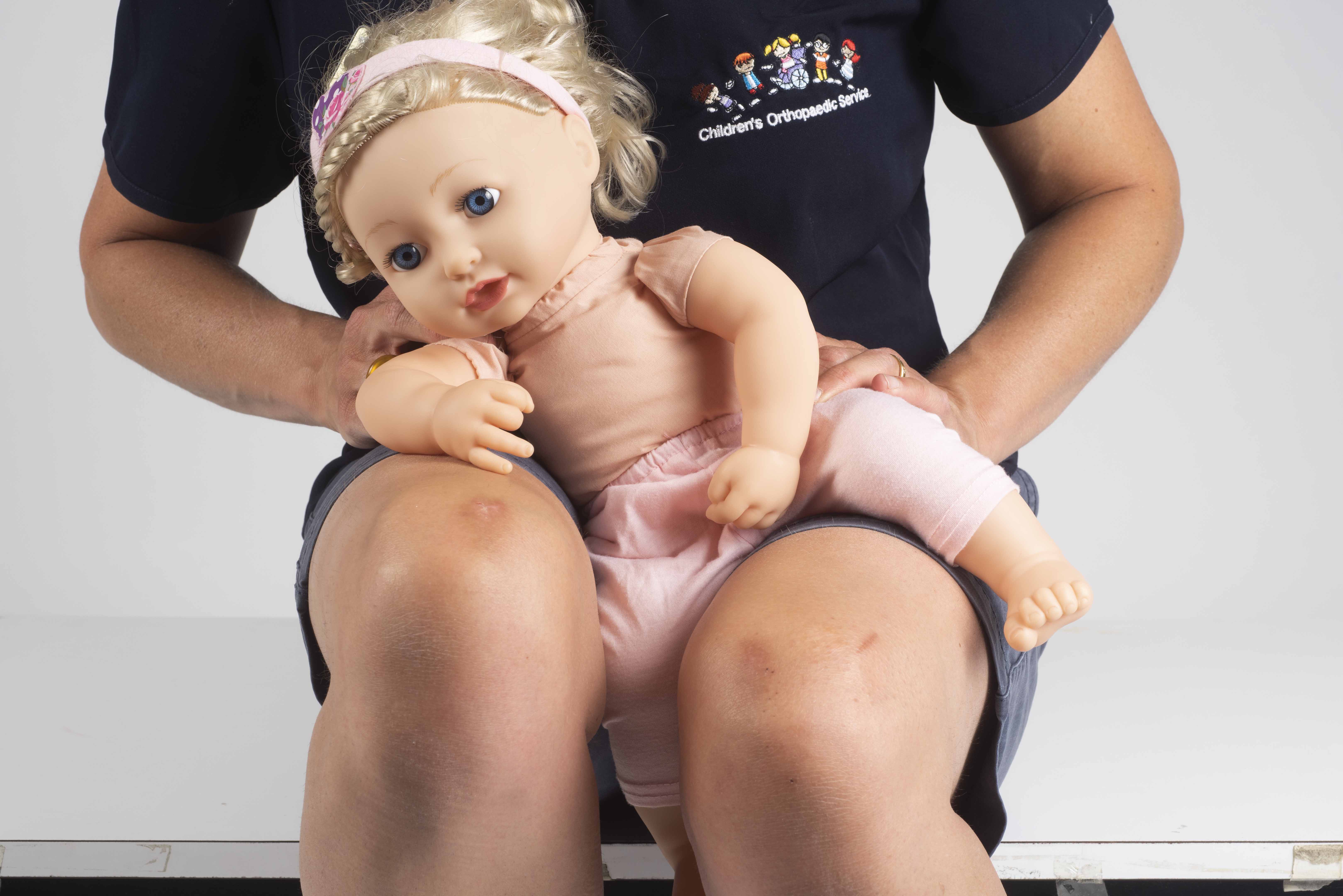 Using a mirror (1)
Using a mirror (1) -
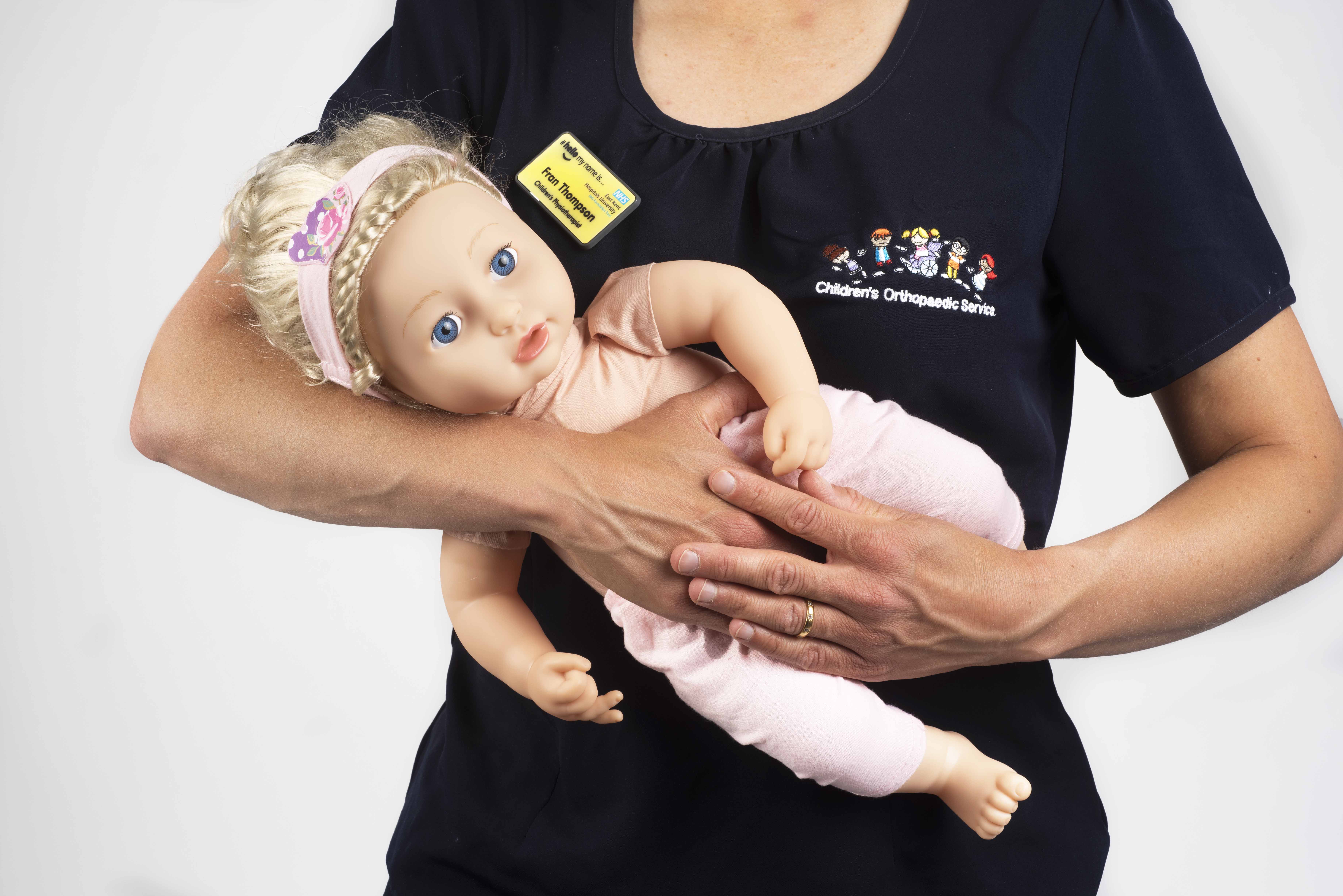 Using a mirror (2)
Using a mirror (2)

‘Peek-a-boo’
This exercise is for older babies who can sit without support.
Place your baby on your lap. Hold their body still.
Play ‘peek-a-boo’ to get them to look over their left shoulder.
Or, get their attention and then turn their body to the right.
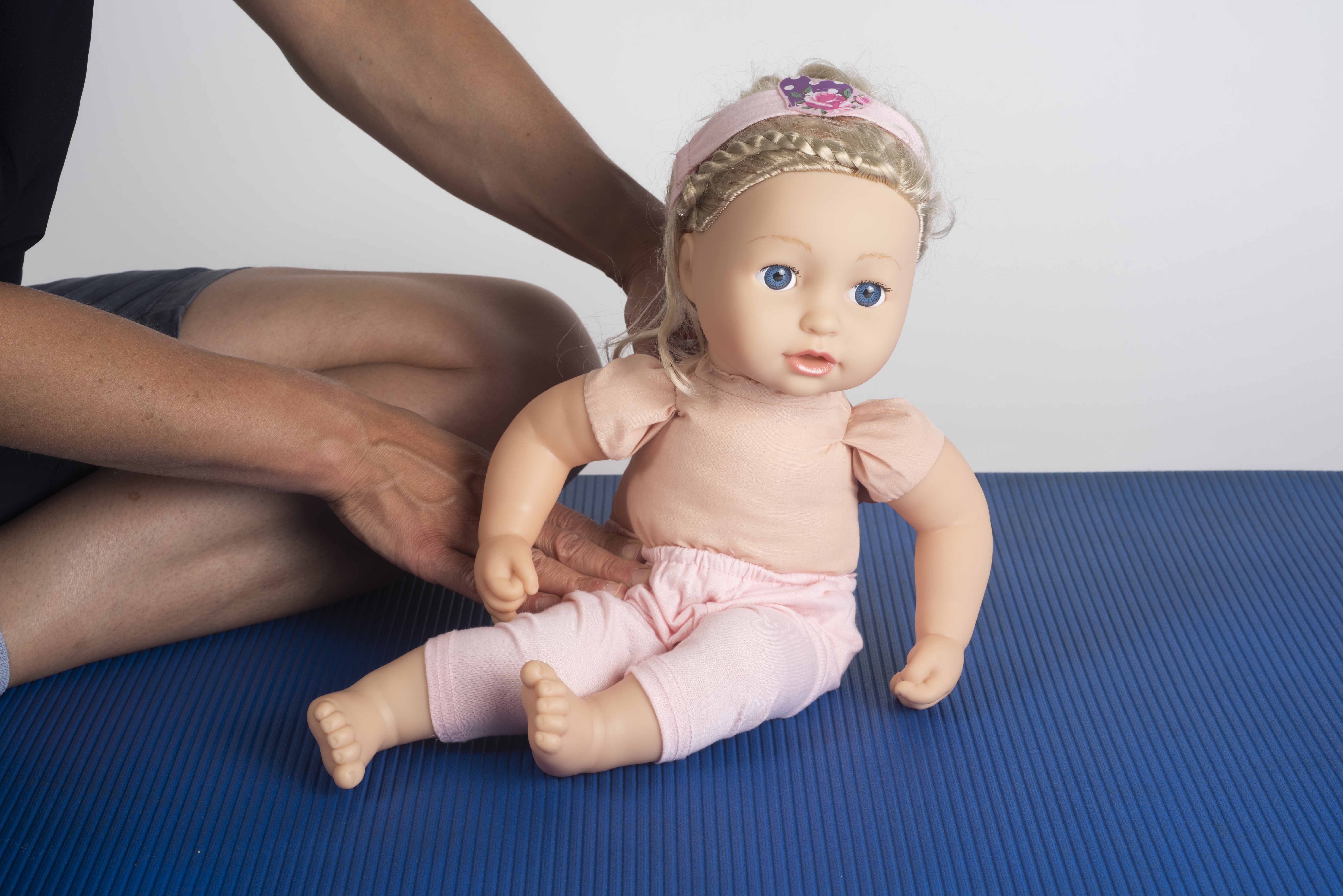
Side sitting
Place your baby in a side sitting position. Make sure their weight is on:
their right or left arm, or elbow, and
their feet to their right or left.
Encourage your baby to reach for toys with their free arm.
Put your hand on their supporting arm and your other hand on their opposite hip. This will help them to lift their head to the centre of their body.
Row, row the boat
Place your baby on your lap.
Encourage gentle movement forwards and backwards.
You can sing Row, Row, Row Your Boat or another favourite song as you do this.
Experiment with moving fast and slow.
-
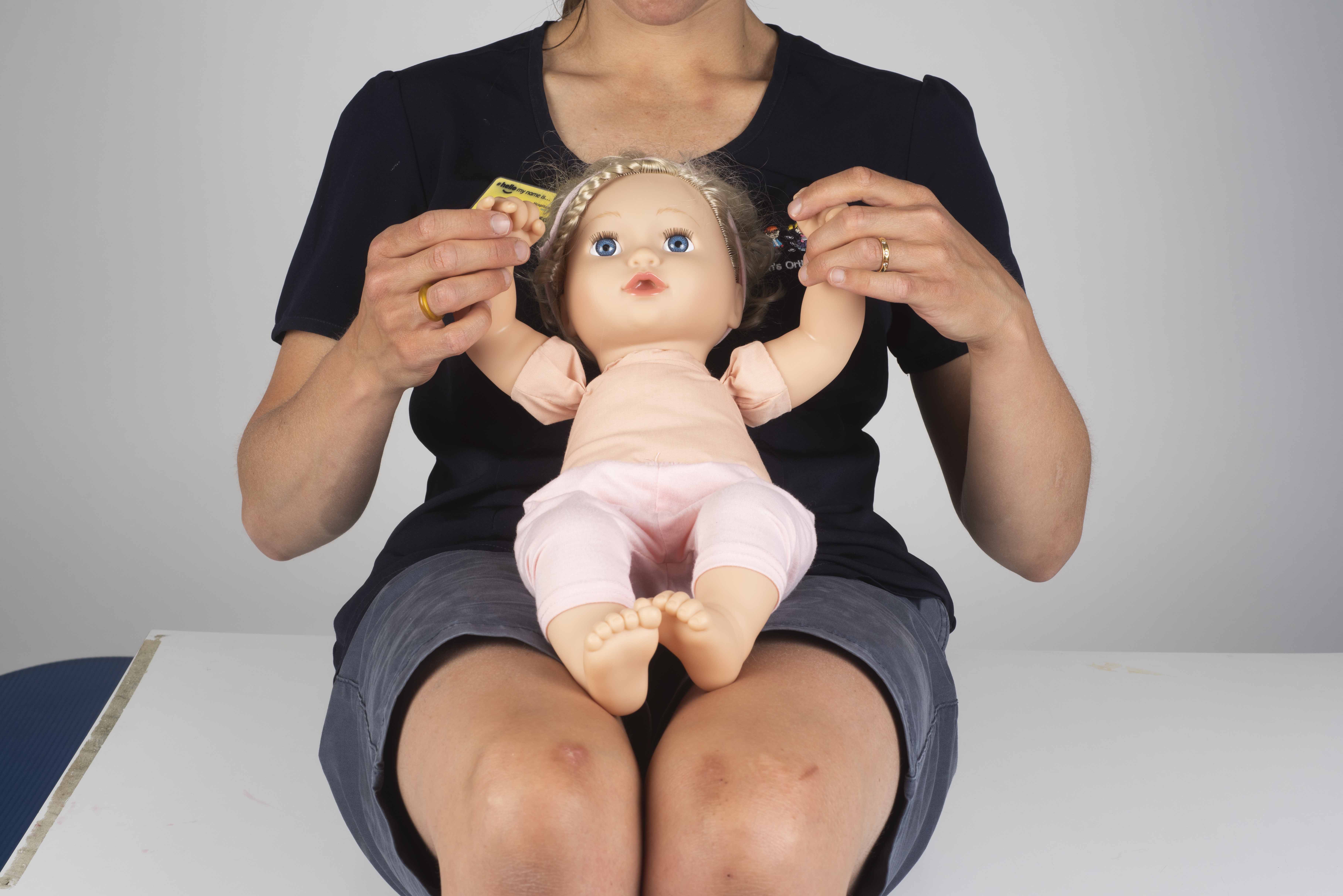 Row, row the boat (backwards)
Row, row the boat (backwards) -
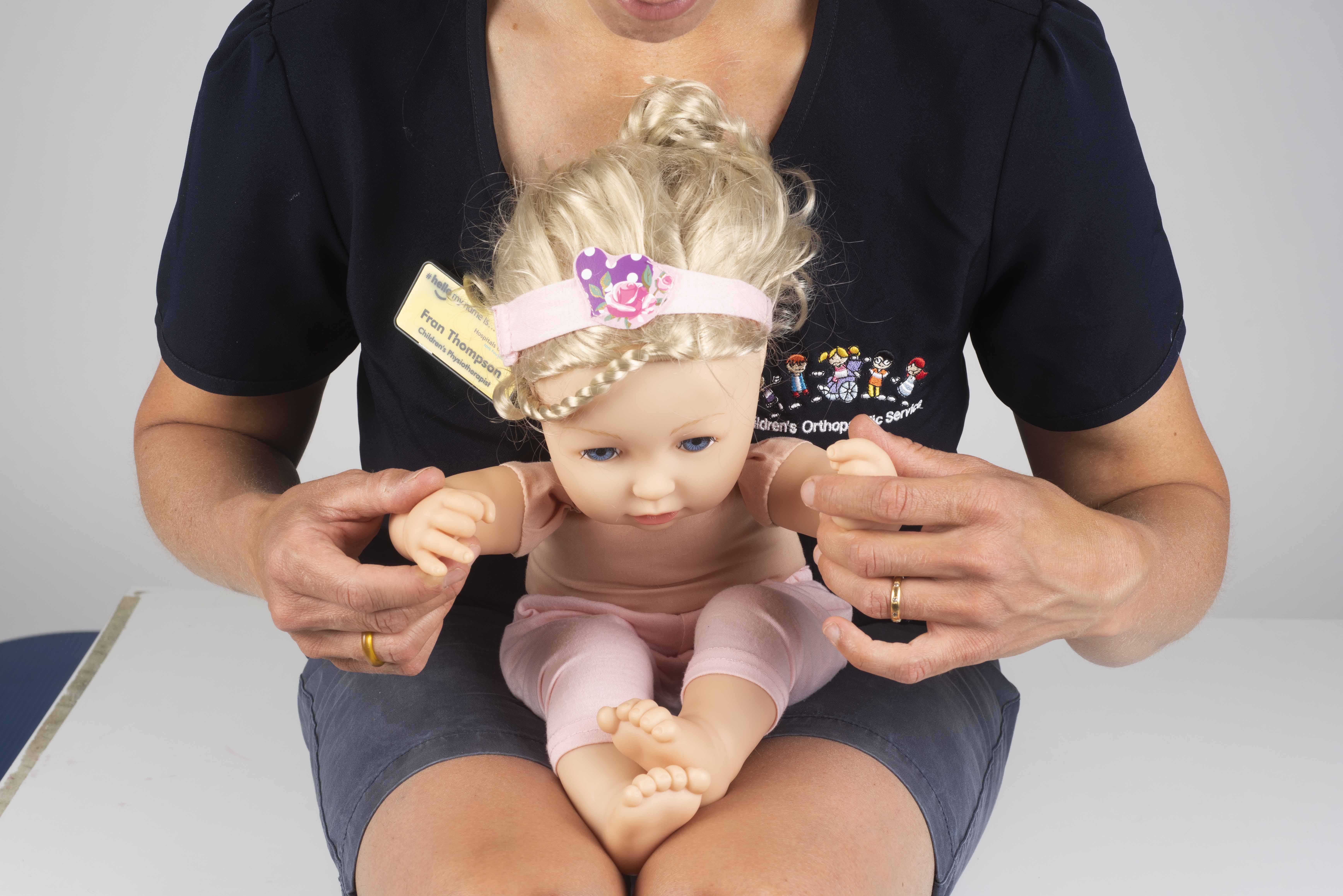 Row, row the boat (forwards)
Row, row the boat (forwards)
Please remember
These exercises should not hurt your baby. If they appear distressed, stop and try again later that day.
Remember each child is different. They will develop and improve in their own time.
If you have any concerns about your baby’s condition or their progress, please contact your GP.
If you have any questions about any of these exercises, please speak to your physiotherapist.